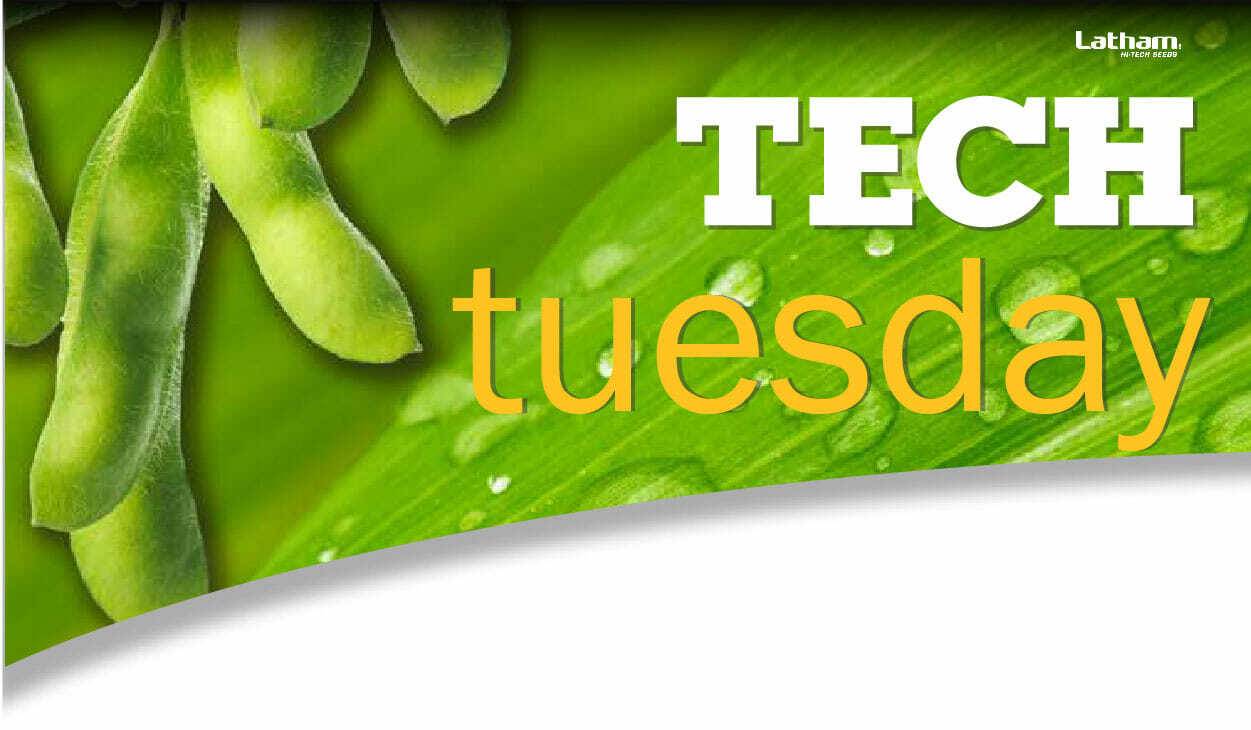-
Latham Hi‑Tech Seeds
Seed Industry Update with John Latham

-
Latham Hi‑Tech Seeds
Quick Steps to Slow Spread of Soybean Aphid Resistance

The number one soybean insect pest is growing across the Upper Midwest. Recent reports indicate some aphid populations are developing resistance to insecticides, especially pyrethroid products.
While we may not be able to stop the spread of this resistance, we can certainly slow it down by using these best management practices:
» Avoid spraying any insecticide if the economic threshold has not been reached. The accepted economic threshold is 250 aphids per plant in 80% of the field as long as the aphid population is increasing. This should not be confused with the injury threshold, which ranges from 600 to 700 aphids per plant. The economic threshold is designed to give farmers time to apply insecticide before the field reaches the injury threshold.
» Use insecticides with different modes of action just like we use herbicides with different modes of action to help control resistant weeds. Some common examples of pyrethroid products include Warrior®, Mustang®, Asana®, Baythroid® and Pounce®, as well as a host of generic products. Lorsban® is an example of an organophosphate insecticide that may be used for aphid control.
» Avoid adding insecticide to herbicide application just as “insurance” or to save a trip across the field, as this can easily lead to resistance problems.
» When applying insecticides, good coverage is essential. Higher spray volumes and pressure help to move the product down into the soybean canopy.
» As with many potential threats, scouting early and often is crucial to overall success! Soybean aphids can greatly increase in numbers if the weather is cooler than normal and if natural predators are not present.
First identified in Wisconsin during the summer of 2000, soybean aphids are found in 21 states and three Canadian provinces. Besides the damage they do by sucking sap from plants, aphids also are vectors of several viruses that attack soybeans.
Scouting for aphids is key for maintaining the health of your soybean crop now… and in the future. Do what you can now to keep numbers down and to avoid insecticide resistance from building.
-
Latham Hi‑Tech Seeds
Begin with Basics to Build Precision Ag Platform

Yield monitors, fancy sensors, and imagery tend to receive the “oohs and aahs” when it comes to precision ag technology. But is that what matters most?
For those who are just starting to use precision ag technology, it’s best to begin with the basics. Climate FieldView™ puts very valuable layers of data right at your finger tips to help make decisions that directly impact your bottom-line.
Fertility should be the base of any crop production system because soil sampling gives your crops the best chance for success. Using the Climate FieldView app, you can pull in your soil sampling data. Use the split-screen tool to view the soil sampling side-by-side with yield data to diagnose season-long problems; or view it beside satellite imagery during the season to make critical last-minute application decisions (see image). You can even use it side-by-side while planting to make last-minute population adjustments based on areas you know have lower fertility.
Soil pH and liming is the foundational piece of the puzzle that can significantly impact how well the other fertilizers and herbicides you apply are getting used by crops. You can apply variable rates of nitrogen (N), phosphorus (P) and potassium (K) and seed. Unless the pH is correct, many of those
applications will be a wash in terms of yield impact. For example, once the soil pH drops below
5.8, soybean nodulation for nitrogen fixation significantly decreases and causes that yellow
soybean look to linger longer and lower yield. If your corn is growing in soils with a pH below 5.5, phosphorus availability takes a nose dive. Phosphorus is critical for yield as it is involved in photosynthesis, respiration, energy reactions, and many other important processes.In regions of Latham Country, farmers struggle more with high pH and the ability to bring it down into that preferred range of 6.0 to 7.0. It’s not economically feasible to attempt lowering pH for large scale production, but having this data at your fingertips can guide you to those areas where you may need for focus on more tolerant crops such as Latham® IRONCLAD™ soybeans. You also can monitor those areas for rescue applications of certain micro-nutrients. In addition, you can apply variable rates of N, P, K fertilizers that include Sulfur, Zinc, or other nutrients to meet a particular crop’s demands in higher-yielding areas.
Whatever the case may be for your specific field, the soil database layers within the Climate FieldView App can help with everything from planning during these winter months to inseason
diagnosis. A pretty yield map can be a real attentiongetter, but when you link your yield map with fertility, it takes FieldXFieldSM crop planning to the next level. By using precision ag tools, you can be confident you’re giving top-yielding Latham genetics the best chance of success! -
Latham Hi‑Tech Seeds
Podcast: Breaking the Cost Barriers to Precision Ag Technology

Tune in as Phil discusses breaking the cost barriers to using precision ag technology. Share your #AsktheAgronomist questions with us on social media and we will answer them on Thursday morning!
-
Latham Hi‑Tech Seeds
Podcast: Seed Traits, Seed Treatments and Crop Rotation

Phil Long wraps up our Profitability Series! Tune in as he talks about seed traits, treatments and crop rotation. Have a great day!
For the Facebook live version, clicker here: https://www.facebook.com/LathamSeeds/videos/10156043160802138/
-
Latham Hi‑Tech Seeds
Podcast: Soil Fertility
 http://traffic.libsyn.com/fromthefield/Soil_Fertility.mp3Join us as we kick off a three week series on all things profitability! Today Phil discusses soil fertility. Submit your questions to us and we will help you answer them! Thanks for tuning in.
http://traffic.libsyn.com/fromthefield/Soil_Fertility.mp3Join us as we kick off a three week series on all things profitability! Today Phil discusses soil fertility. Submit your questions to us and we will help you answer them! Thanks for tuning in. -
Latham Hi‑Tech Seeds
Podcast: Nitrification Inhibitors

Join us as Phil Long answers the question: Are nitrification inhibitors worth applying in the fall?
Don’t forget to submit your questions to us on Facebook, Twitter, Instagram or Snapchat!
-
Latham Hi‑Tech Seeds
Podcast: Soil Sampling
 Good morning and welcome back to our Podcast! Our topic today is all things soil sampling. We are also adding a new twist on our Podcast by broadcasting it on Facbook while we record! To view the video, follow the link below!
Good morning and welcome back to our Podcast! Our topic today is all things soil sampling. We are also adding a new twist on our Podcast by broadcasting it on Facbook while we record! To view the video, follow the link below! -
Latham Hi‑Tech Seeds
Podcast: Climate FieldView™ In the Cab

Tune in for an update from our Agronomy Specialist, Phil Long, on Latham’s Precision Ag Platform. He shares tips and pointers that farmers can implement in the field starting this harvest!
-
Latham Hi‑Tech Seeds
Podcast: Ear Rot

Welcome back! It’s been a wet and cold fall for many farmers in our marketing territory. Today, our Agronomy Specialist, Phil Long, discusses different types of ear rot he has seen in the field and how to plan for the next year.
Thanks for tuning in and have a safe harvest.



